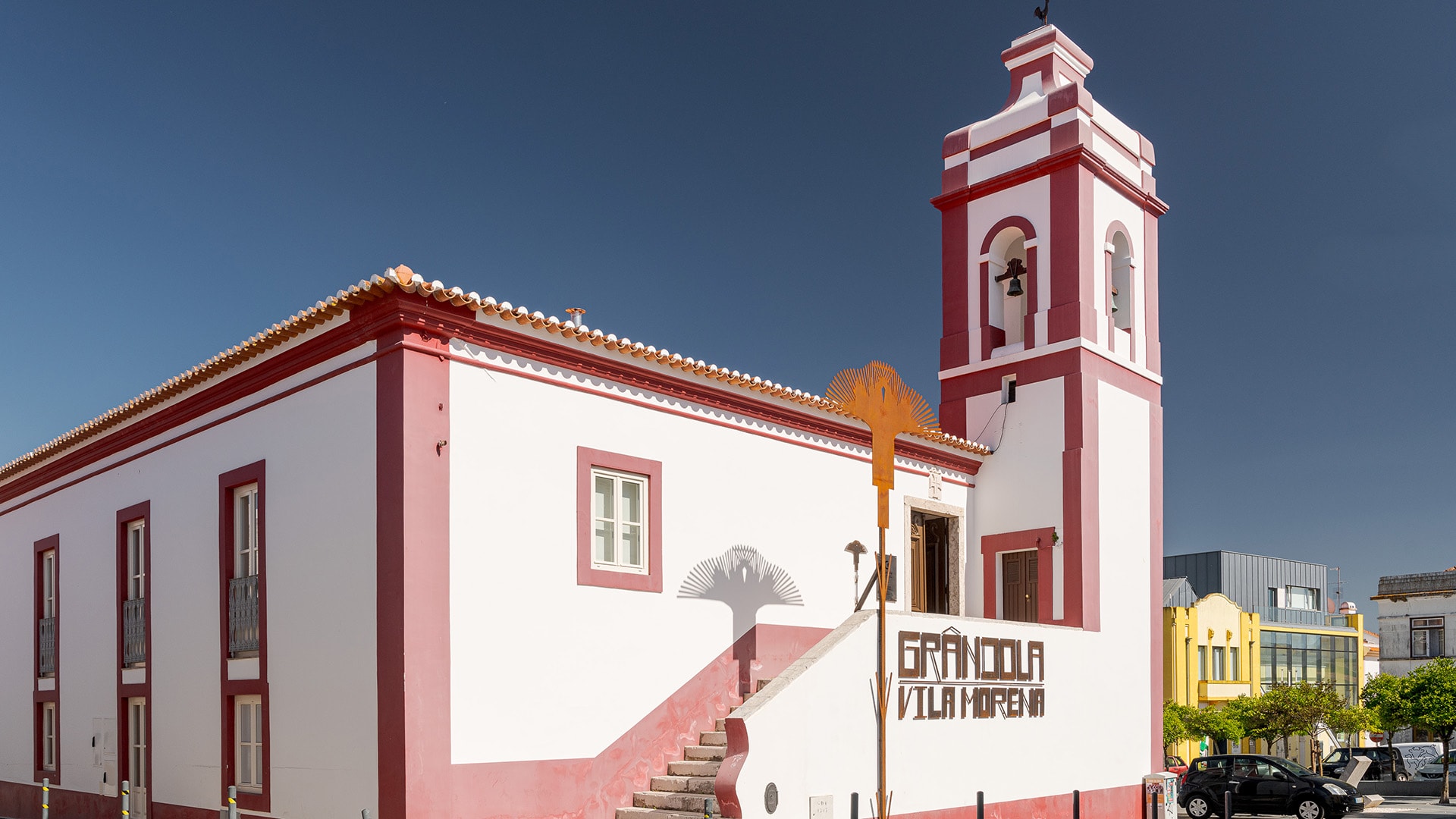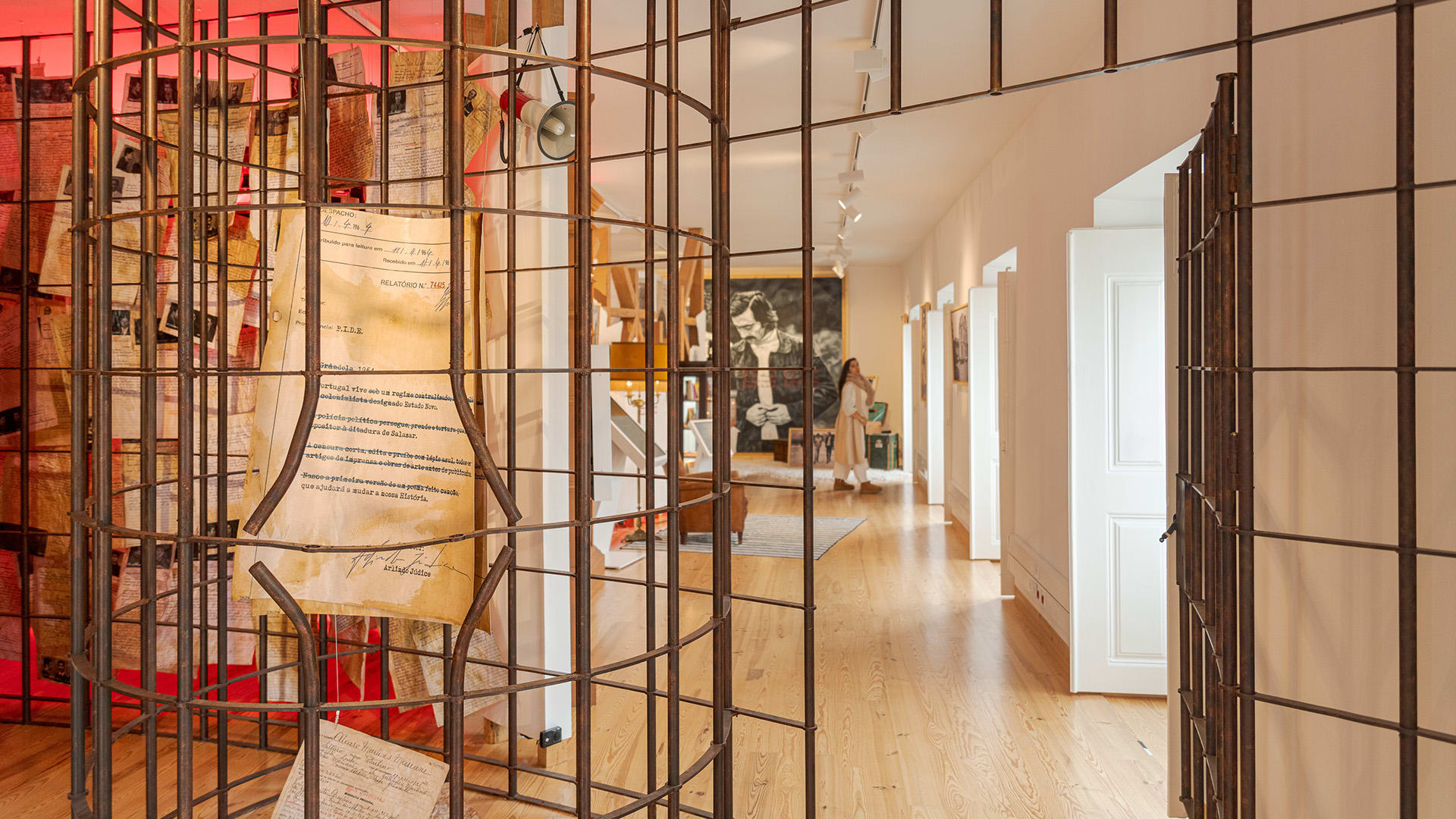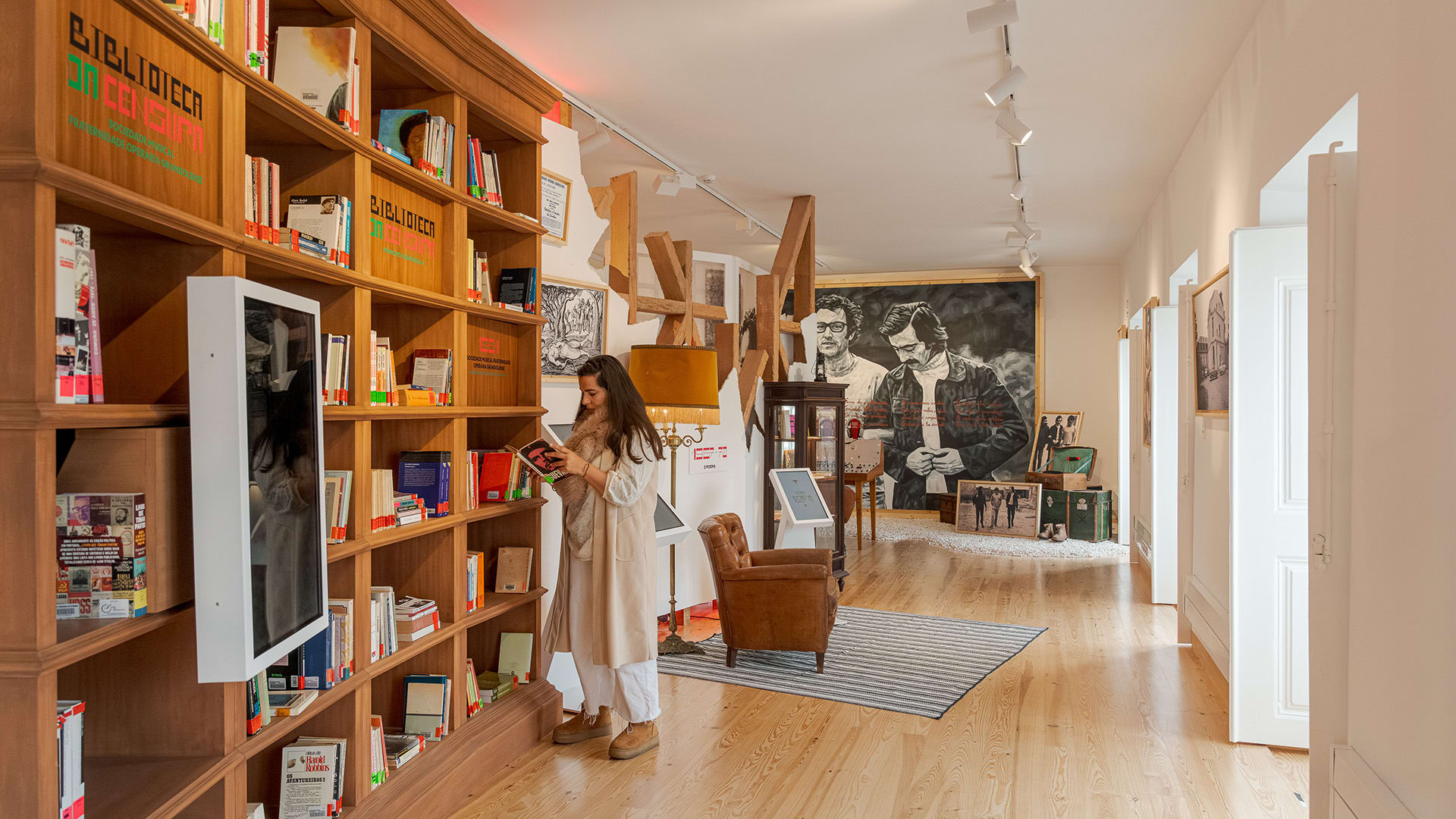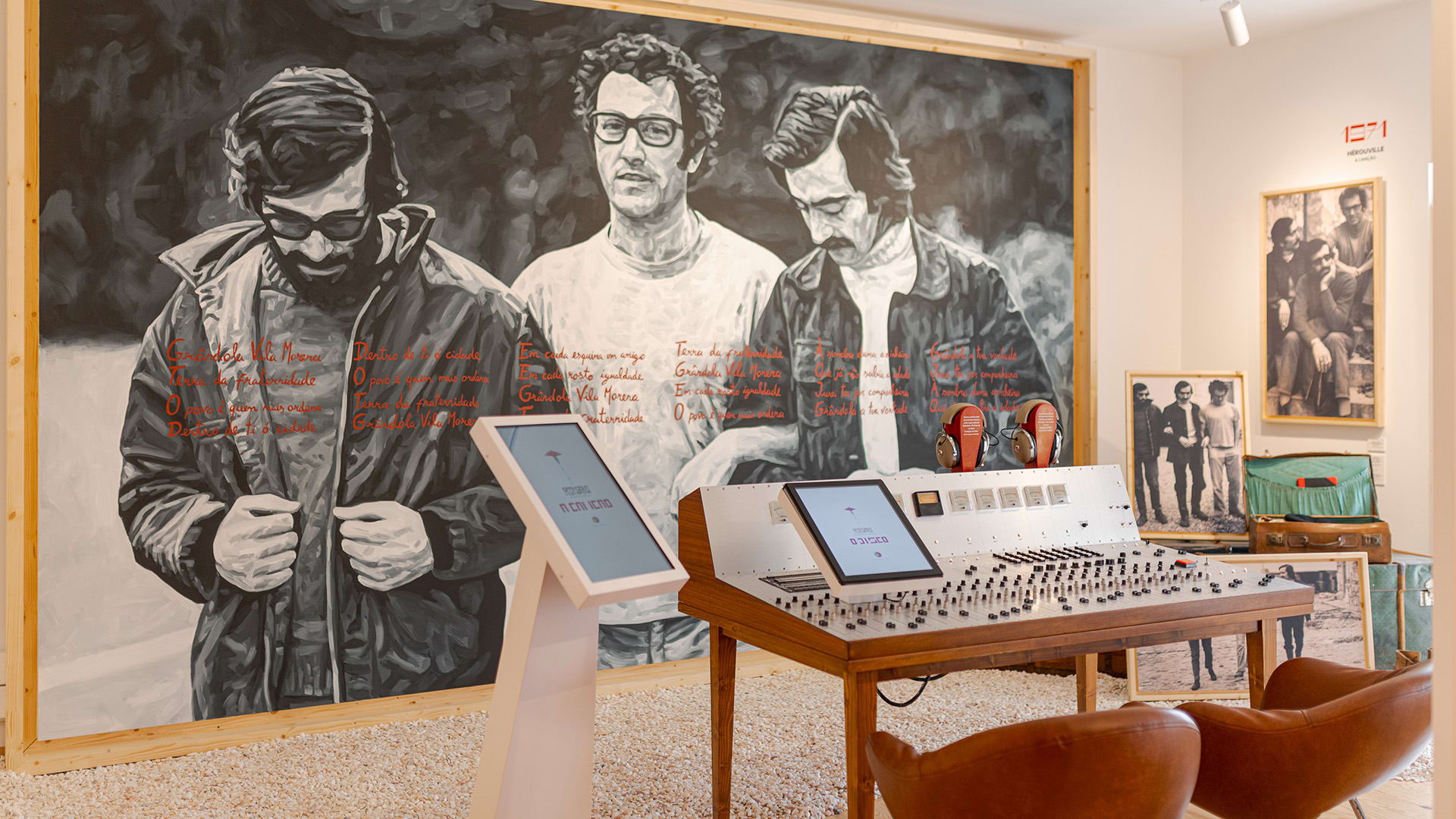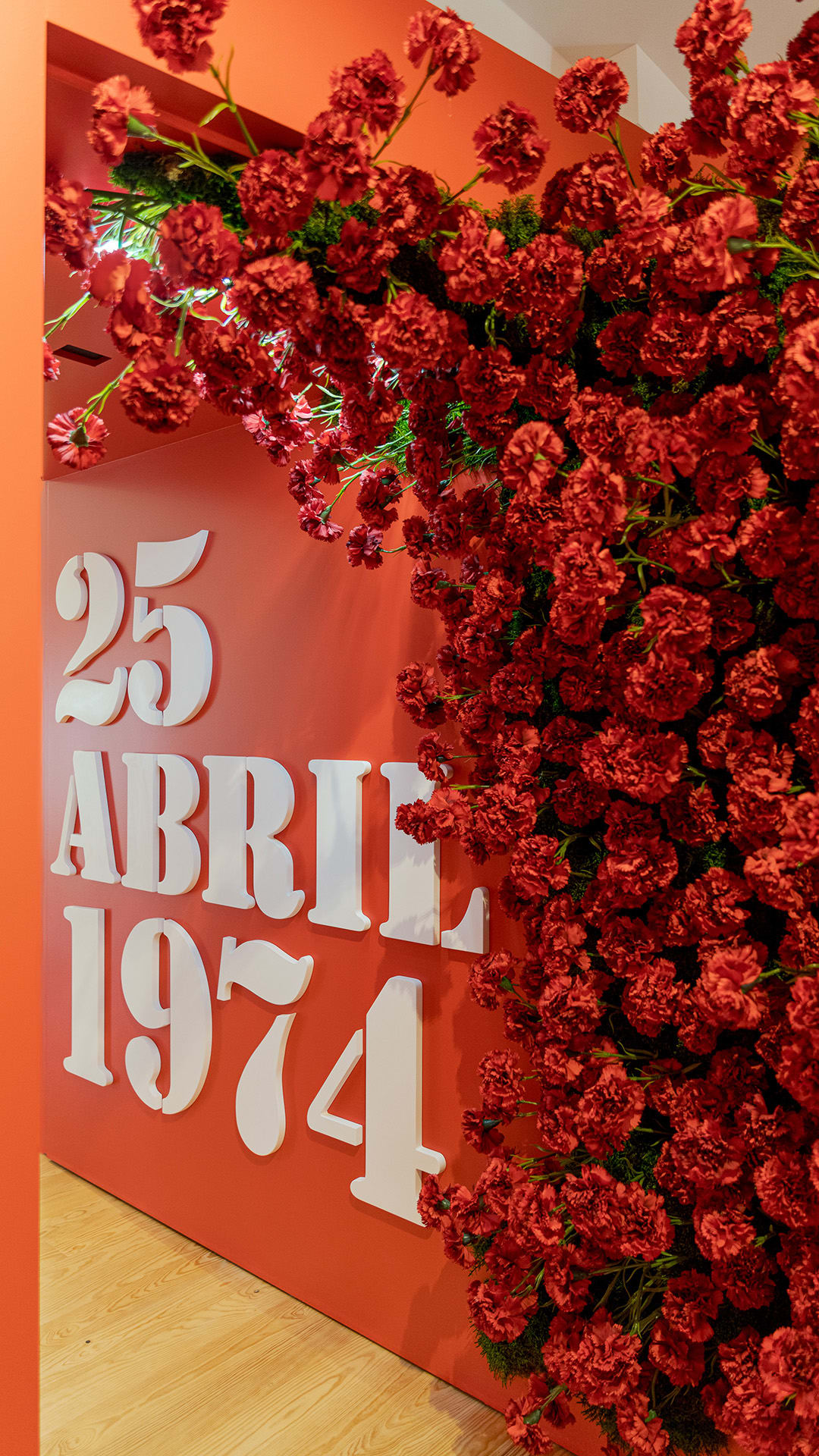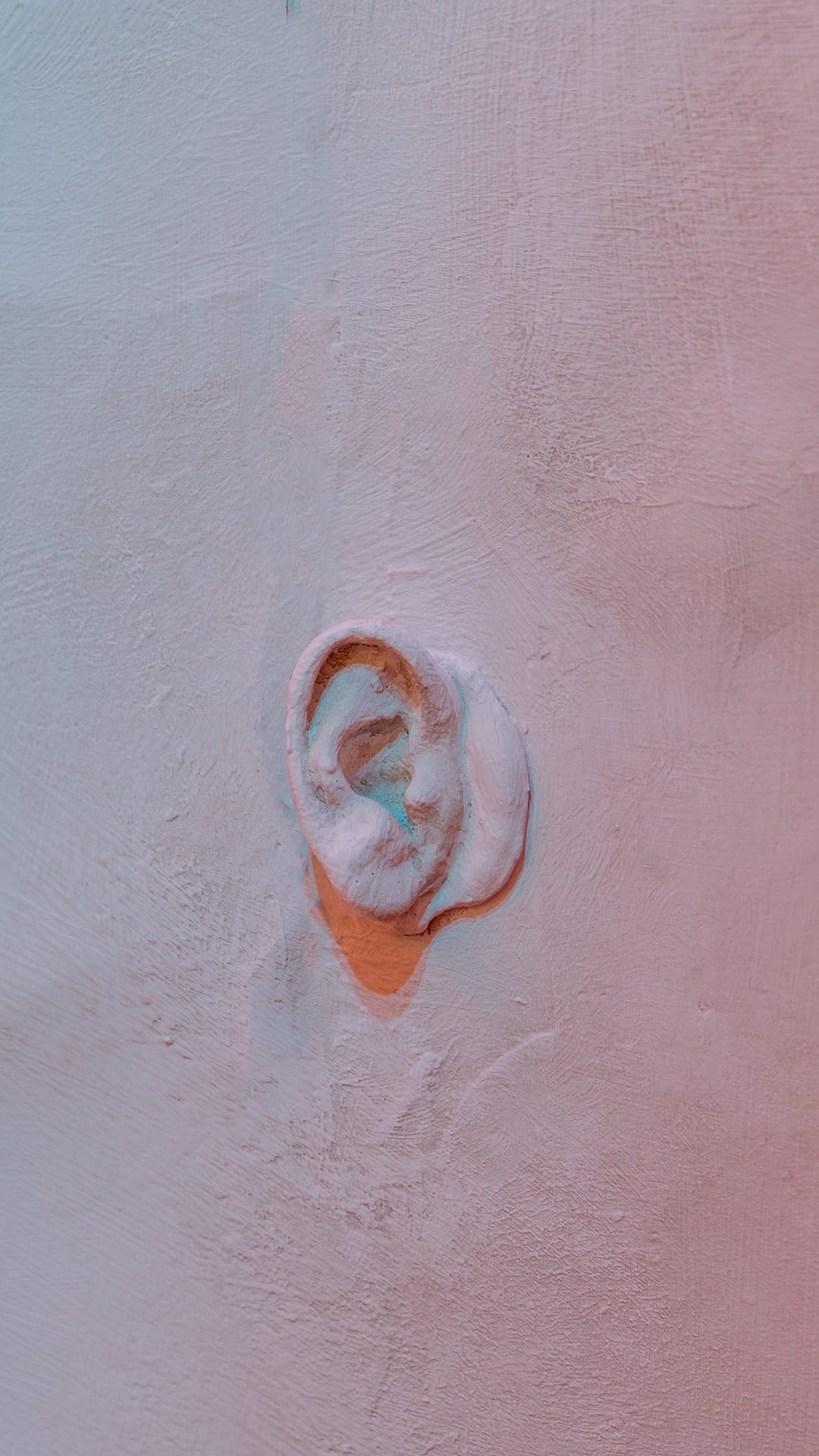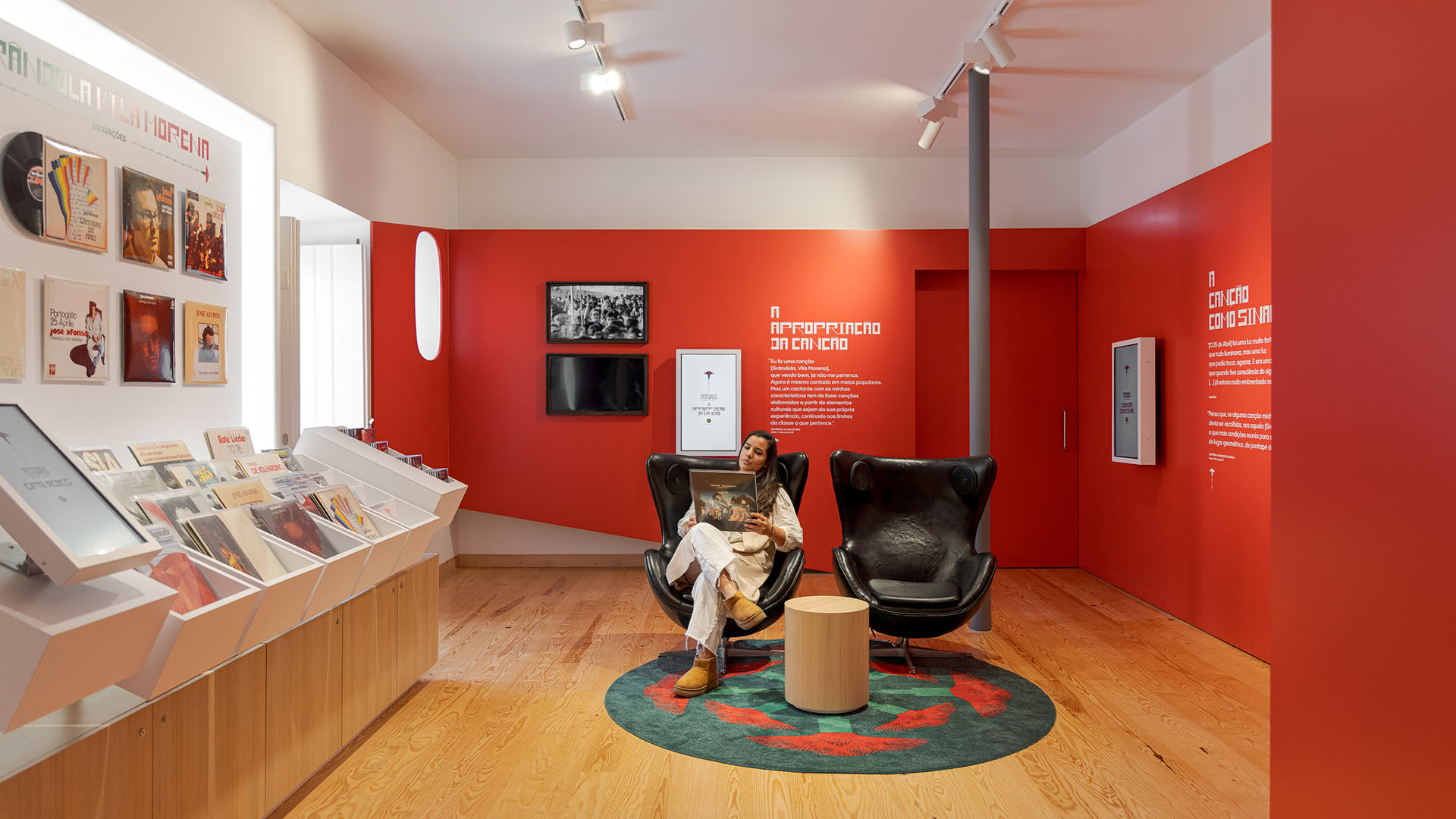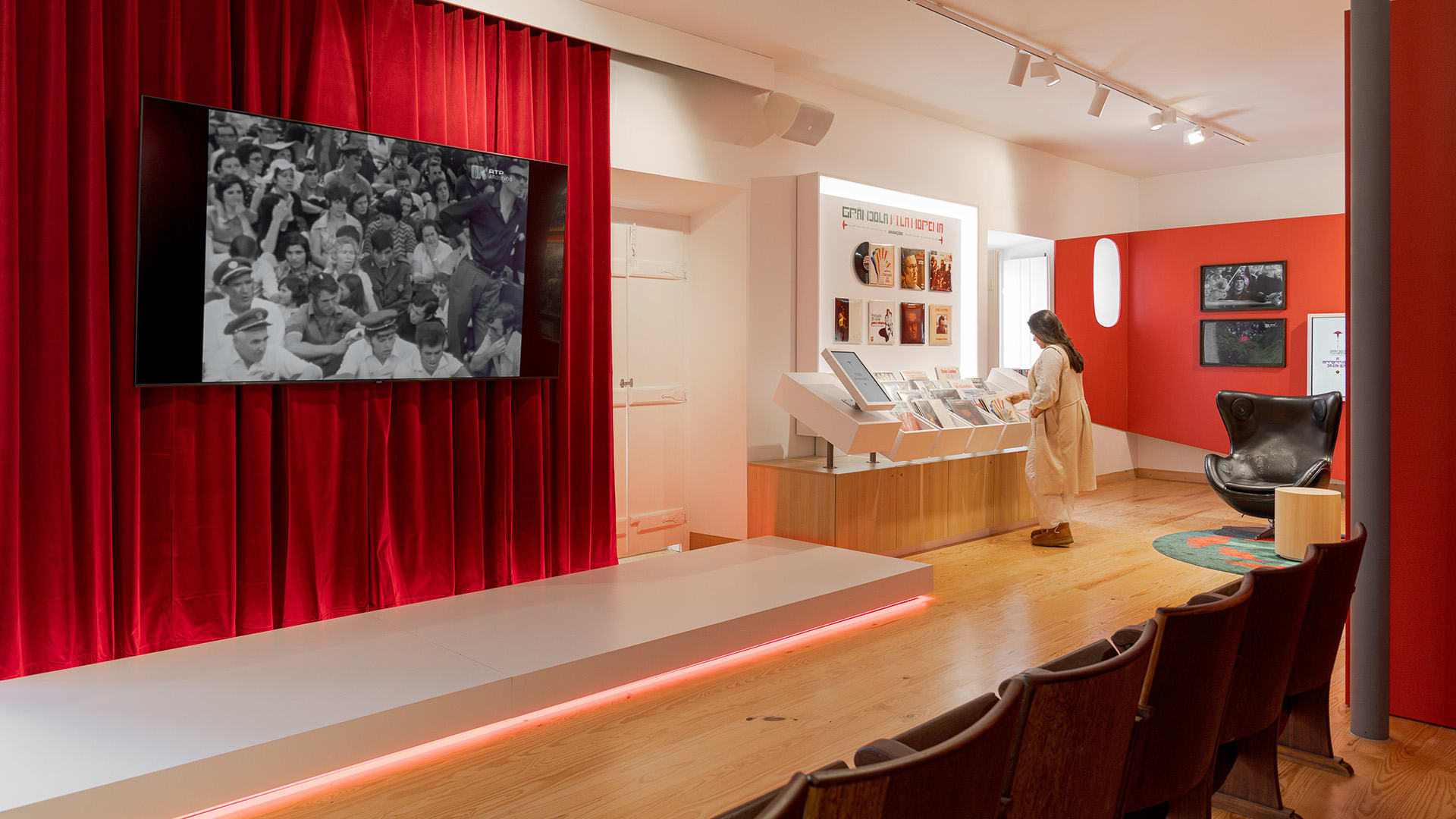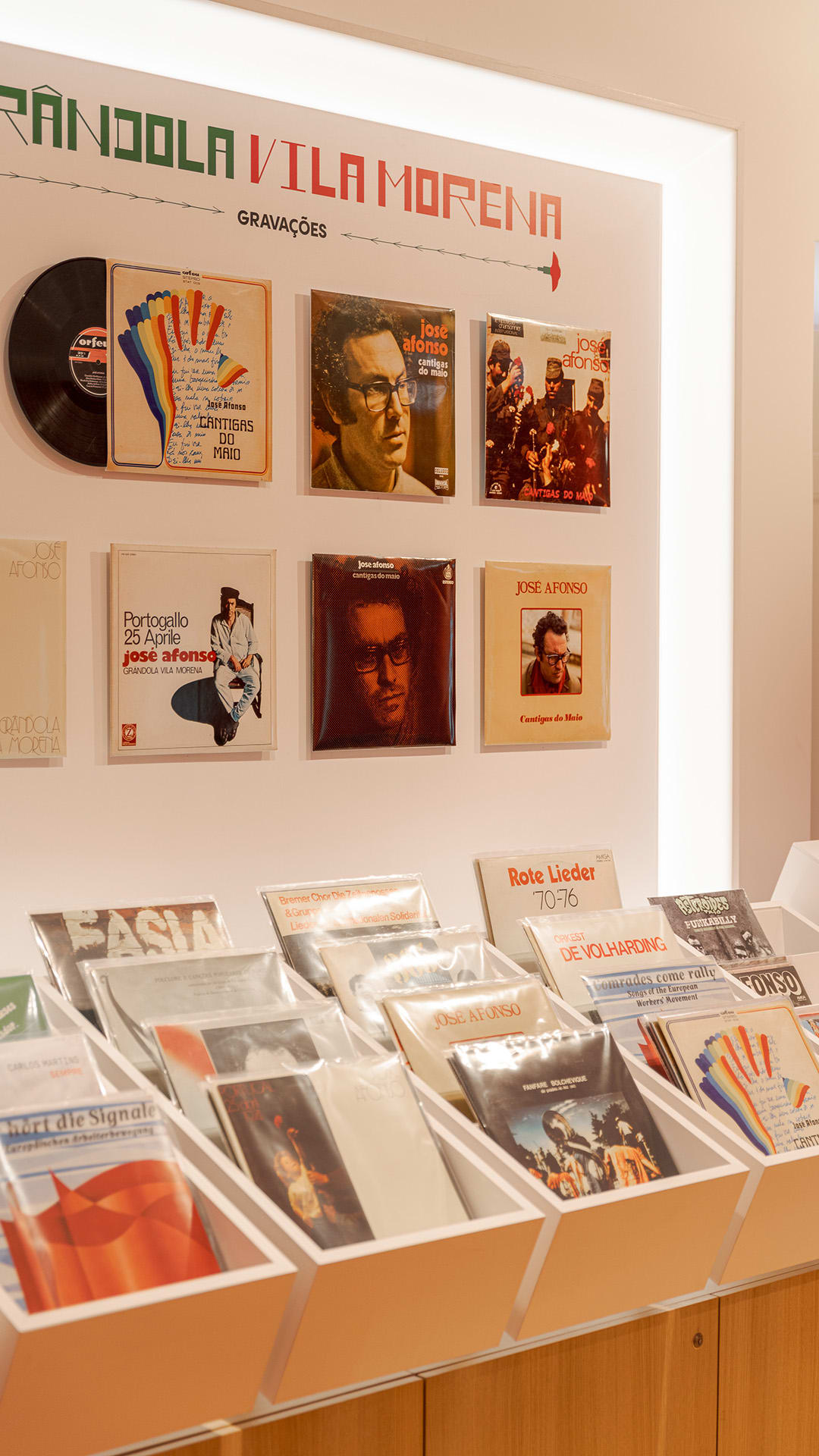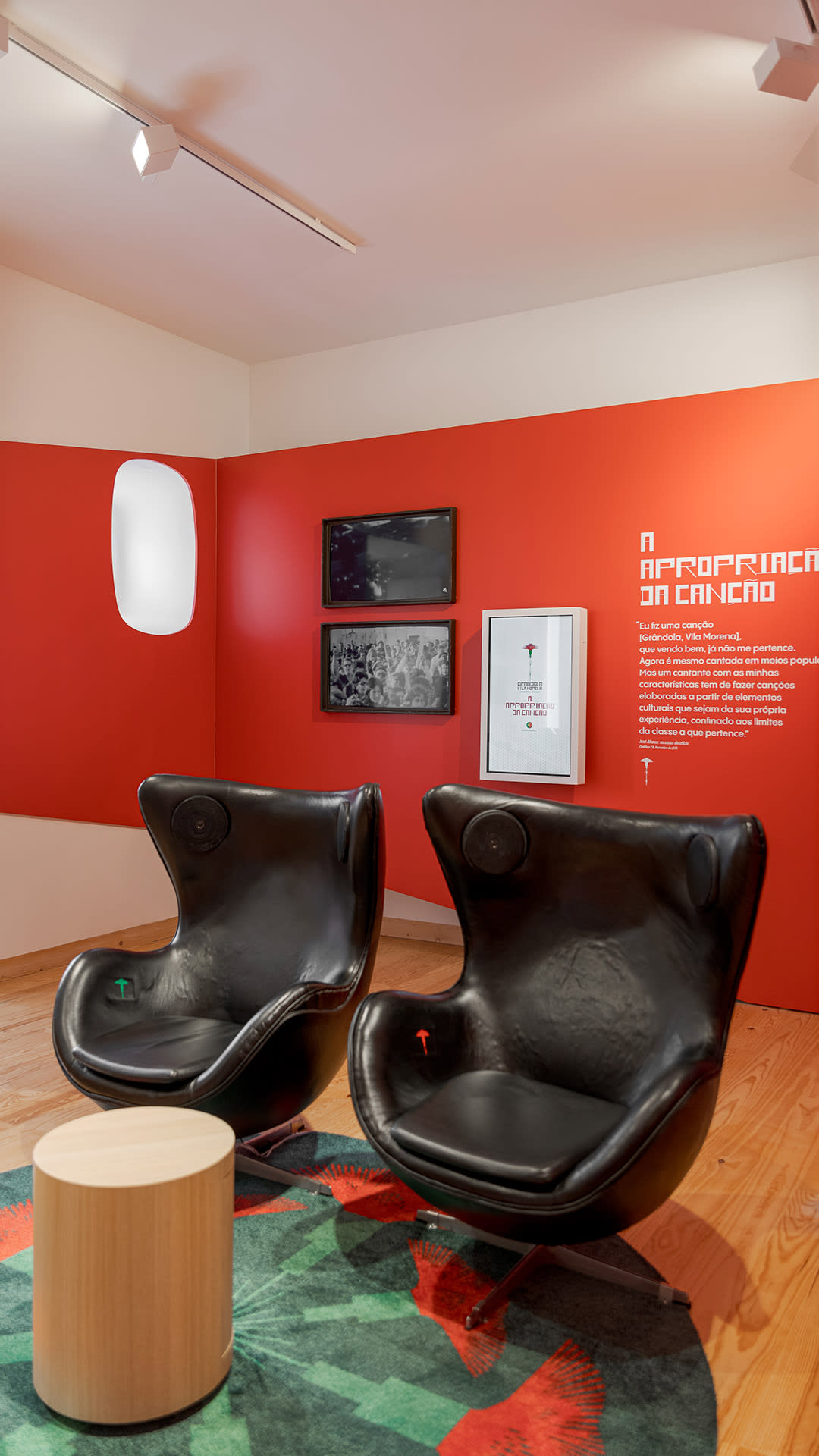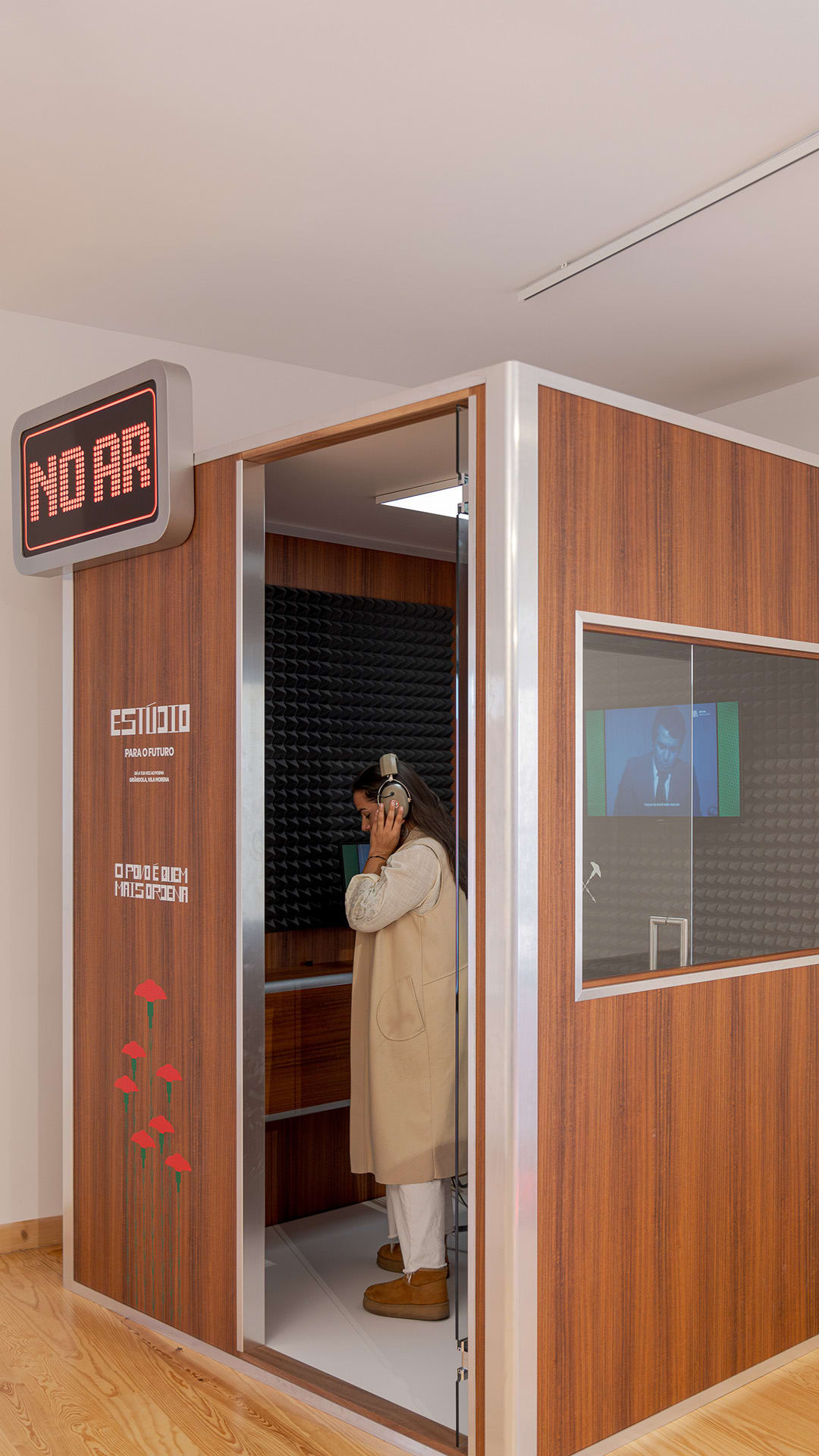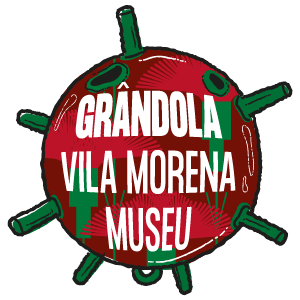
MUSEU GRÂNDOLA, VILA MORENA
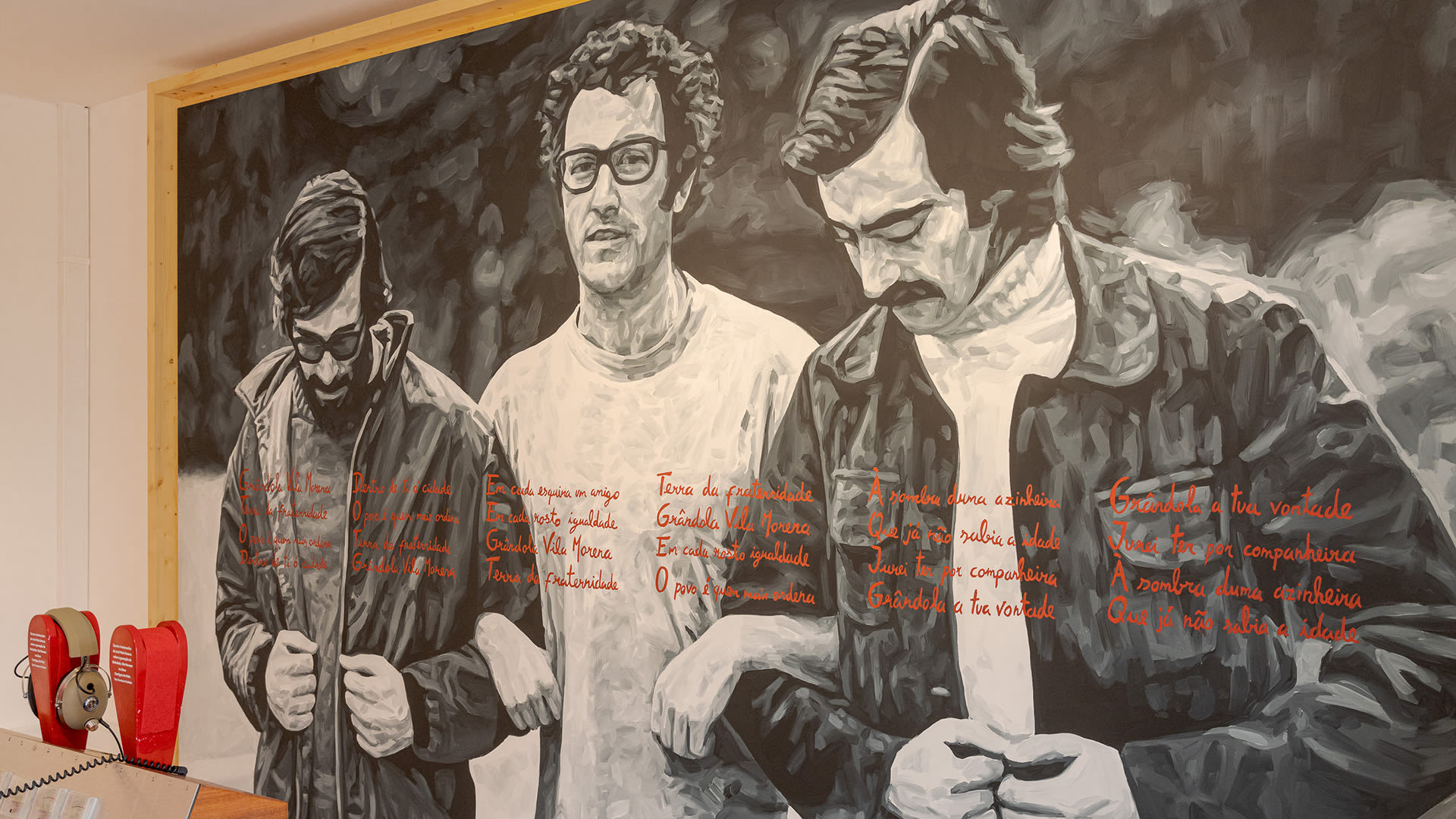
Pode uma música ter um museu? A Música só tem corpo, só existe quando é tocada. Ouvida. Não deixa roupas, pertences ou apontamentos. Não acumula acervos nem deixa vontades em herança.
Pode uma música que numa noite de 1974 ajudou a mudar um país e que ainda é chamada à ação sempre que alguém quer lutar pela liberdade ser conservada num museu?
Não. Por isso em vez de um espaço cheio de vídeos em loop, painéis intermináveis de texto e fotografias de grande formato, criámos a casa onde GRÂNDOLA a música pode ser descoberta todos os dias.
Uma casa que se desenvolve e vivencia como uma peça de teatro imersivo onde o visitante é constantemente convidado a ser o ator principal.
Quer seja a explorar a biblioteca onde estão as sementes que ajudaram ao nascimento desta música ou a operar a mesa de mistura que reproduz a experiência daqueles três pais no Castelo de Hérouville.
Ou ainda, mais inesperado, a sentar-se na mesa de um agente da PIDE e sentir o que era escutar e espiar quem dava o corpo ao manifesto.
Por fim, e num itinerário que serpenteia e alonga ao máximo a pequena área disponível, o visitante-ator é desafiado a juntar a sua voz a todas as que antes de si também cantaram GRÂNDOLA.
E a experimentar a fisicalidade de uma máquina de escrever dos anos 70, para deixar registo do que pensa ser a Liberdade.
Em paralelo, todo o percurso é servido por écrans táteis de grande formato, onde podemos mergulhar mais a fundo no extenso trabalho de investigação e documentação feito pela Câmara Municipal de Grândola em torno da história de “GRÂNDOLA VILA MORENA”.
Esta espinha dorsal digital, tem um sistema desenvolvido de raiz e em exclusivo para o espaço, de forma a ser atualizada a qualquer momento. Nunca ficando datada.
Porque nesta casa, a música habita sempre viva.
Can a song have a museum? The song only has a body, it only exists when played. Heard. It doesn't leave clothes, belongings, or annotations. It doesn't accumulate archives or leaves last wishes in its’ will.
Can a song that on a night in 1974 helped change a country and is still called to action whenever someone wants to fight for freedom be preserved in a museum?
No. That's why instead of a space full of videos on loop, endless panels of text and large-format photographs, we created the house where GRÂNDOLA the song can be discovered every day.
A house that unfolds and is experienced like an immersive theater piece where the visitor is constantly invited to be the main actor.
Whether exploring the library where the seeds that helped give birth to this song are kept or operating the mixing console that reproduces the experience of those three fathers in the Castle of Hérouville.
Or even more unexpectedly, sitting at the table of a PIDE agent and feeling what it was like to listen and spy on those who where against the regime.
Finally, in an itinerary that meanders and stretches the small available area to its maximum, the visitor-actors are challenged to add their voice to all of those who sang GRÂNDOLA before them.
And to experience the physicality of a 1970s typewriter, in order to leave a record of what Freedom means to them.
In parallel, the entire route is served by large-format touch screens, where we can dive deeper into the extensive research and documentation work done by the Grândola Municipal Council around the history of “GRÂNDOLA VILA MORENA”. This digital backbone has a system developed from scratch and exclusively for the space, so it can be updated at any moment. Never becoming outdated.
Because in this house, the song lives on.
